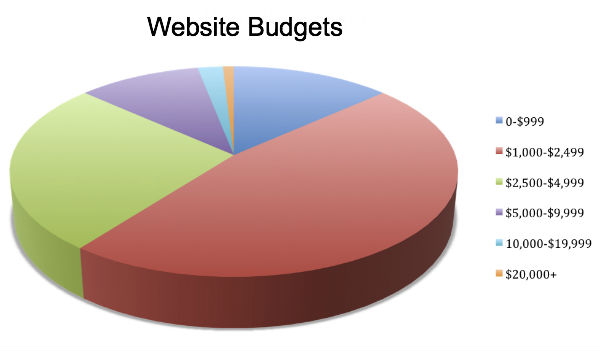Businesses spend time and money on everything from radio spots to social media to generate leads, but unfortunately they tend to neglect their prospects’ ultimate destination — their websites. This all-too-common oversight sabotages their marketing initiatives, sales and overall success.

In a bid to boost bottom lines, many small businesses spend thousands of dollars monthly on myriad marketing initiatives, ranging from social media to print campaigns, from radio spots to (sadly) telephone directory ads. Meanwhile, in a Webcopyplus survey of 659 respondents, nearly 87% indicated they spent less than $5,000 on their websites.
Here’s a breakdown of the poll, which asked: how much did you spend on your last website, including content, design and development?
Budget Respondents
| 0 – $999 | 88 |
| $1,000 – $2,499 | 310 |
| $2,500 – $4,999 | 173 |
| $5,000 – $9,999 | 68 |
| 10,000 – $19,999 | 14 |
| $20,000 + | 6 |
The Problem
Regardless of how leads are generated — search engines, Facebook, PR, sponsorships, print, tradeshows — most prospects end up on the business’ website. In fact, most of today’s campaigns and ads deliberately guide prospects to websites, i.e. “For more information, go to www…”
No matter how creative and clever marketing campaigns are, if prospects arrive at a substandard or flawed website, most of them won’t convert. That equates to missed opportunities and a low ROI.
Why do business owners so willingly dedicate resources to marketing initiatives that drive traffic to their website, yet devote little investment in the website itself? Simply put, they overlook the essential role and value of their website.
A Necessary Mind Shift
Business owners need to think of their websites as marketing hubs, which connect all marketing strategies and tactics, online and offline.
A poorly designed website undermines the overall marketing strategy, hurts brand perception, frustrates and turns off prospects, and ultimately drives leads to the competition.
Alternatively, a well designed website enhances brands, conveys value in products and services, and offers relevant and useful content that engages visitors and facilitates conversions and sales.
Getting Priorities Straight
Instead of prioritizing marketing vehicles that drive traffic, businesses should first concentrate on their website — their marketing hub — and then unleash any campaigns. This approach allows businesses to fully leverage every marketing dollar they invest and ultimately achieve healthier bottom lines.









The problem is cheap business owners!!